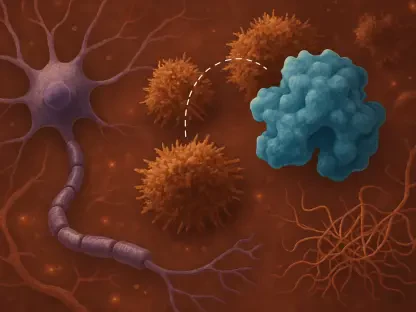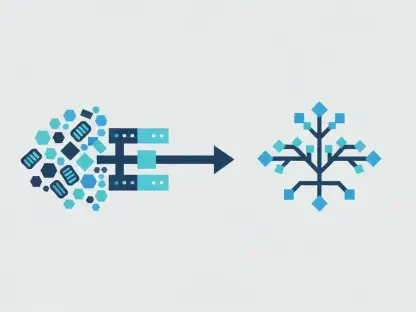The question of whether chromosomal changes can be a catalyst for major evolutionary shifts is becoming increasingly pertinent in contemporary evolutionary biology discourse. Major evolutionary shifts, often referred to as macromutations, describe significant transformations in an organism’s phenotype potentially brought on by chromosomal rearrangements. These rearrangements include inversions, translocations, deletions, and duplications, which are thought to contribute to adaptive evolution and influence survival and reproductive success. Dr. Zachariah Gompert from Utah State University is spearheading research to investigate the power of these genomic alterations in driving evolutionary progress. With his scientific inquiry focusing on large-scale chromosomal changes, Gompert aims to elucidate how these alterations affect the adaptation process and evolutionary fitness of various organisms, potentially shifting our understanding of evolutionary dynamics and trait development.
The Role of Chromosomal Rearrangements in Evolution
Chromosomal rearrangements and their significance in evolution raise intriguing questions within evolutionary biology. These changes can result from alterations in the structure or number of chromosomes, and they often lead to bursts of phenotypic diversity. Such genomic rearrangements have historically been understudied, mainly overshadowed by the focus on smaller genetic mutations accumulating over time. As researchers delve deeper into this area, it becomes apparent that these rearrangements can produce dramatic genotype modifications. The capability of these modifications to influence the ability to adapt to environmental changes presents an appealing hypothesis. Gompert’s research emphasizes these larger genetic shifts, challenging the prevailing belief centered on incremental mutations. By examining the adaptive capabilities and Darwinian fitness results from significant chromosomal changes, Gompert offers insights into whether these rearrangements might indeed be substantial drivers of evolutionary change.
Gompert’s investigation into chromosomal rearrangements is notable for its focus on model organisms such as stick insects, butterflies, and seed beetles. These specific organisms have diverse, yet documented genomic profiles which make them ideal for studying adaptive evolution on a chromosomal level. The significance of these changes can be monumental. Some mutations may create new genetic variations that have immediate effects on phenotype and fitness, while others might yield evolutionary benefits when external environmental conditions fluctuate. Through this scientific endeavor, Gompert hopes to provide clarity regarding how such changes contribute to adaptation. By understanding which rearrangements prove beneficial, the work can potentially redefine interpretations of trait development. This focus not only offers a new paradigm in evolutionary genetics but also enhances comprehension of how genomic structures influence and drive natural selection.
Funding and Educational Impact
One of the vital components supporting Gompert’s research is the Maximizing Investigators’ Research Award (MIRA). This grant, totaling $1.85 million, fuels a comprehensive study aimed at unraveling the genetic mechanisms underlying adaptation through chromosomal alterations. Given the substantial investment, this research receives attention not only for its scientific merit but also for its educational implications. The grant facilitates an intensive program, merging scientific exploration with student engagement. Incorporating undergraduate and graduate students, Gompert’s methodology ensures that aspiring scientists gain invaluable experience. Through practical training involving experimental research, genomics, and computational analysis, students are exposed to a broad array of advanced technologies and methods, preparing them for future careers in sectors like biomedical research and agricultural genetics.
The educational impact of Gompert’s research extends beyond typical academic boundaries. By integrating modern techniques including whole genome sequencing and data analysis, students are immersed in fields pivotal to understanding genomic evolution. This educational aspect is further amplified by instructing students in computational approaches such as machine learning, revolutionizing how biological data is interpreted. No longer confined to traditional methodologies, students learn innovation-driven skills that expand their scientific toolkit. In preparing these students for modern scientific challenges, Gompert’s commitment plays a role in fostering the next generation of biologists. This environment cultivates enthusiasm and curiosity, encouraging future contributions to evolutionary biology. The potential for groundbreaking discoveries resonates not only academically but also in practical applications within medicine and agriculture.
Interdisciplinary Collaboration and Broader Implications
Interdisciplinary collaboration is becoming increasingly significant in scientific research, and Gompert’s affiliation with Utah State University’s Data Science and Artificial Intelligence Center exemplifies this trend. Such collaborations expand the scope of evolutionary biology by incorporating diverse perspectives and expertise. By partnering with faculty from various departments, Gompert aims to integrate advanced computational methodologies with biological research. This teamwork approach not only tackles complex evolutionary questions but also fosters innovative solutions that could transcend traditional disciplinary confines. In doing so, the potential for discoveries broadens, as researchers employ interdisciplinary tools to achieve a deeper understanding of chromosomal rearrangements and their evolutionary implications.
Beyond the immediate research objectives, the implications of Gompert’s interdisciplinary approach extend into areas such as medicine and agriculture. Understanding how genomic changes contribute to adaptation and trait development can yield practical applications for these fields. In medicine, insights into chromosomal rearrangements might enhance genetic diagnostics or offer avenues for personalized medicine based on evolutionary principles. In agriculture, knowledge gained from this research could aid in crop improvement efforts and devising strategies to elevate plant resilience to environmental stresses. The interplay between genomics and practical applications highlights the importance of exploring evolutionary biology both academically and pragmatically, potentially leading to societal benefits that address pressing challenges.
New Perspectives on Genomic Research
Gompert’s efforts underscore a shift in scientific exploration, emphasizing comprehensive genomic research aimed at understanding evolutionary processes. This trend reflects a broader scientific consensus for emphasizing large-scale genomic datasets and their analytical interpretation. By employing techniques such as whole-genome sequencing and computational modeling, Gompert contributes to a growing body of evidence validating this focus. Modern genomic tools provide unprecedented insights, allowing for an intricate examination of evolutionary phenomena and establishing correlations between genetic variations and ecological shifts. This paradigm shift has transformed the way researchers comprehend biological complexity, leading to novel revelations concerning evolutionary dynamics and diversity.
The utilization of advanced genomics offers insights into potential mechanisms driving adaptive evolution. Identifying key chromosomal changes helps delineate how traits result from environmental pressures and genomic architecture interactions. Gompert’s research endorses the importance of strategic genomic analysis, which reveals insights into how organisms adapt and thrive. As genomic datasets grow, the link between computational tools and biological insights strengthens, offering real-world applications in diverse fields. By exploring this frontier, Gompert not only enriches evolutionary biology but also contributes to an innovative understanding of genomic architectures that may redefine adaptive tinkerings across ecosystems.
Towards a New Understanding of Evolution
Chromosomal rearrangements pose fascinating queries in evolutionary biology. These changes, involving alterations in the structure or number of chromosomes, often lead to sudden bursts of phenotypic diversity. Historically, these genomic shifts have been somewhat neglected, overshadowed by a focus on small genetic mutations that accumulate over time. However, as more research is conducted, it becomes increasingly evident that such rearrangements can result in significant genotype modifications, potentially revolutionizing adaptive capacities to environmental changes. Gompert’s research emphasizes these larger genetic alterations, challenging the prevalent belief centered on more gradual mutations. By investigating the adaptive potential and Darwinian fitness following significant chromosomal changes, Gompert seeks to determine if these rearrangements are truly substantial drivers of evolutionary change. His work with model organisms like stick insects, butterflies, and seed beetles highlights how documented genomic profiles can clarify adaptation processes, possibly redefining our understanding of trait development and natural selection in evolutionary genetics.









